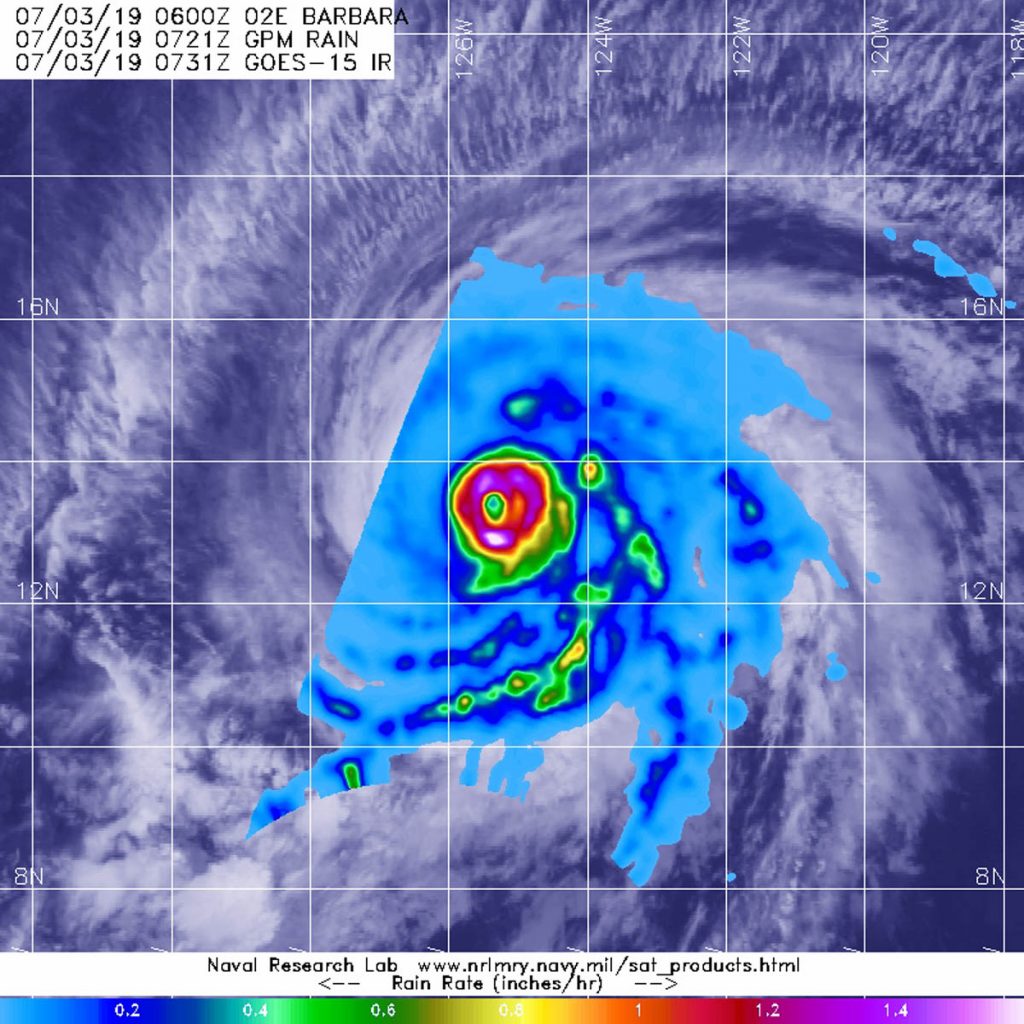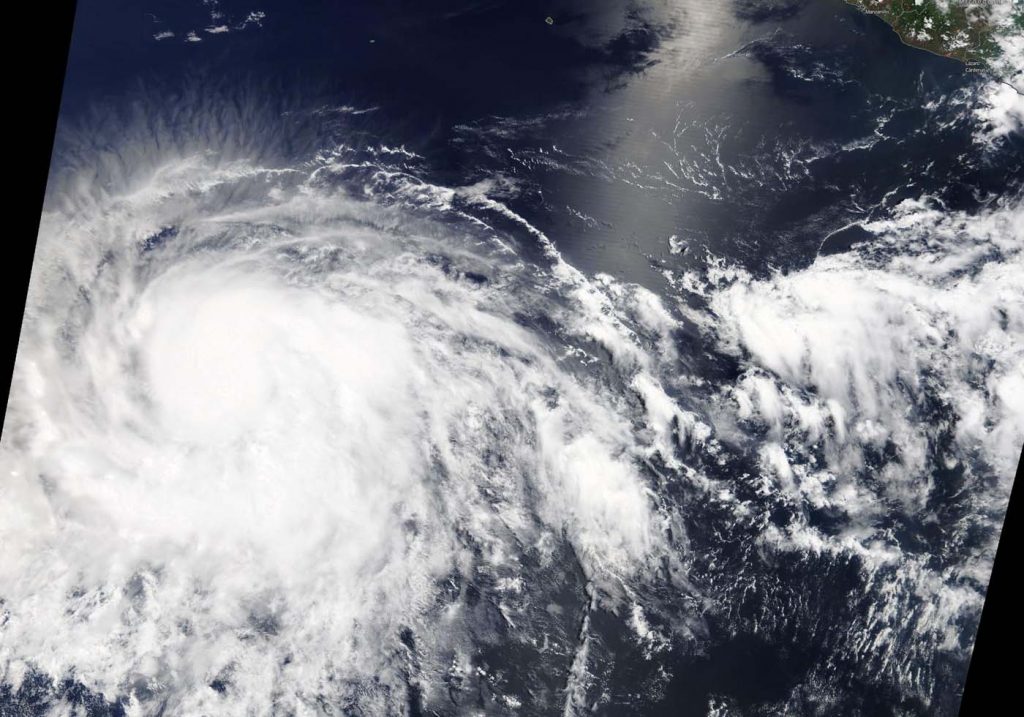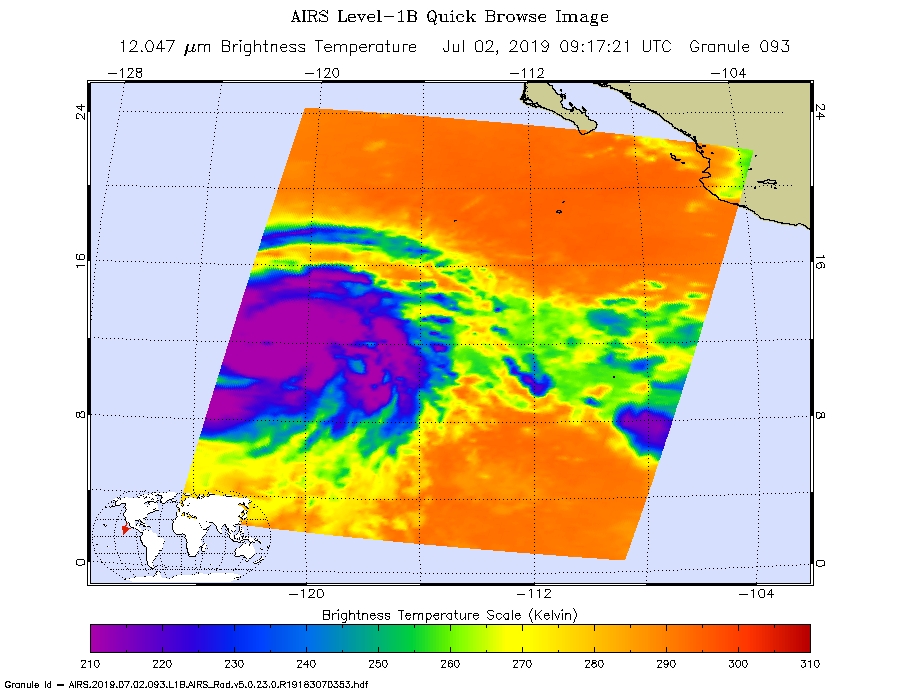July 5, 2019, Update – NASA-NOAA Satellite Catches Hurricane Barbara’s Closing Eye
Hurricane Barbara continued to track west through the Eastern Pacific Ocean when NASA-NOAA’s Suomi NPP satellite passed overhead on July 4. Satellite imagery revealed clouds filling into Barbara’s eye as wind shear continued to weaken the storm and push the bulk of its clouds north of the center.

The Visible Infrared Imaging Radiometer Suite (VIIRS) instrument aboard Suomi NPP provided a visible image of the storm. The VIIRS image and microwave satellite imagery indicates that Barbara is being torn apart by winds outside or around the storm. In general, wind shear is a measure of how the speed and direction of winds change with altitude. The National Hurricane Center noted that the eyewall structure appears to be disintegrating and the low-level center is located to the south of the remaining strong thunderstorms.
There are several factors weakening the once Category 4 hurricane: increasing southwesterly wind shear, dry air moving into the storm and sapping the moisture and energy, and cooler sea surface temperatures that lay ahead of the storm as it continues moving west.
At 5 a.m. EDT (0900 UTC) on July 5, NOAA’s National Hurricane Center said the eye of Hurricane Barbara was located near latitude 17.7 degrees north and longitude 132.6 degrees west. That puts the eye about 1,475 miles (2,375 km) east of Hilo, Hawaii. Barbara is moving toward the northwest near 12 mph (19 kph). The forecast calls for a gradual turn toward the west through Saturday, July 6. The estimated minimum central pressure is 980 millibars (28.94 inches).
Maximum sustained winds have decreased to near 80 mph (130 kph) with higher gusts. Hurricane-force winds extend outward up to 35 miles (55 km) from the center and tropical-storm-force winds extend outward up to 150 miles (240 km).
Barbara is on a weakening trend. 24 hours earlier the storm had maximum sustained winds near 120 mph (195 kph). Forecasters expect additional rapid weakening and Barbara is expected to become a post-tropical cyclone late on July 6.
For updated forecasts on Barbara, visit: www.nhc.noaa.gov
Rob Gutro
NASA’s Goddard Space Flight Center, Greenbelt, Md.




